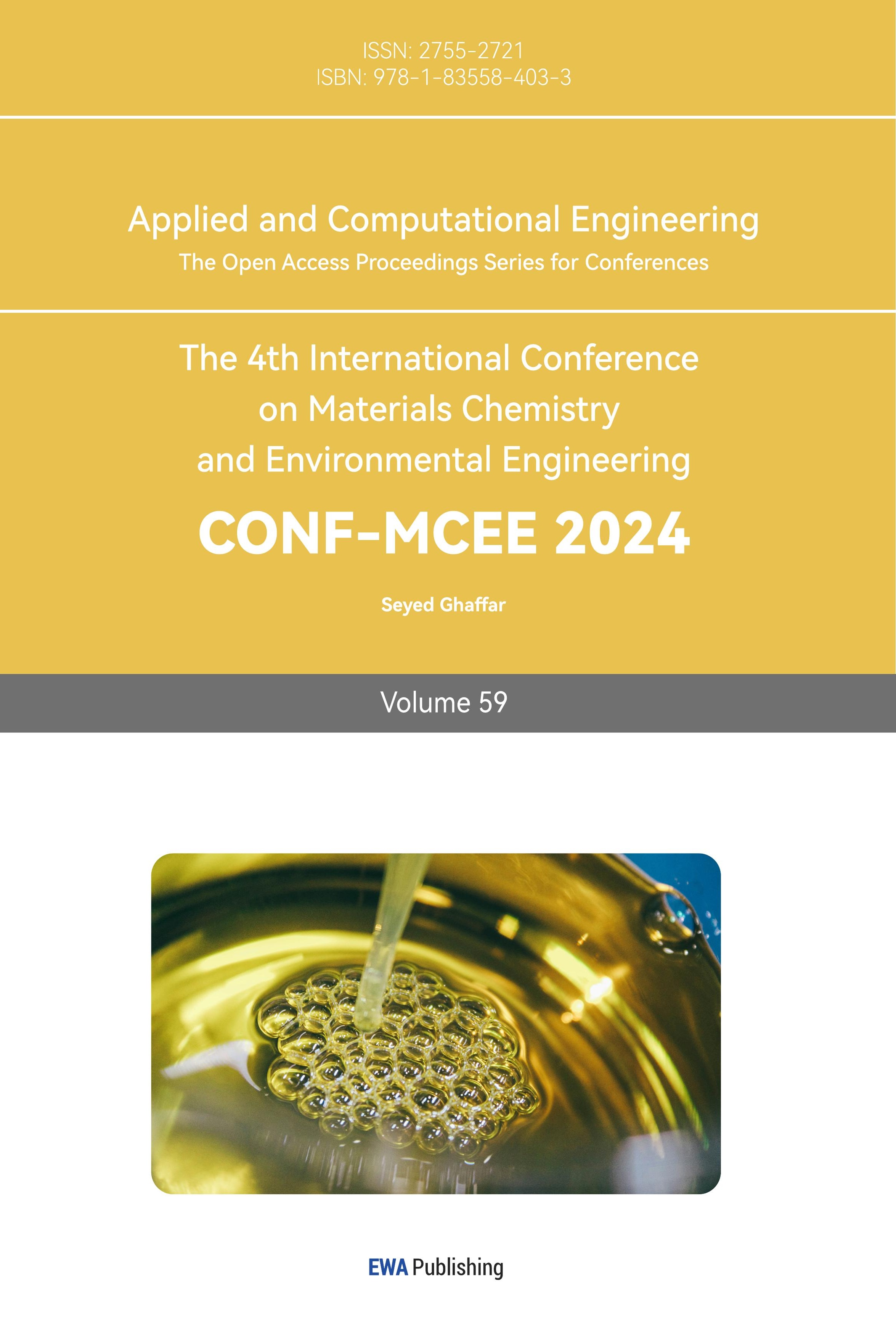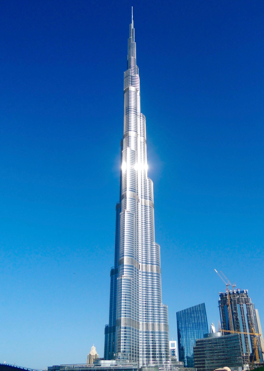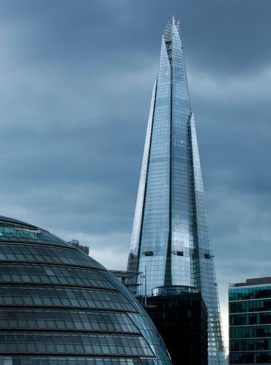1. Introduction
Compared to traditional structural steel, stainless steel has excellent corrosion resistance and high strength. It has better comprehensive mechanical properties, shorter construction cycles, longer design service life, lower life cycle costs, and higher comprehensive social benefits when applied to steel structure engineering, especially for engineering structures with high corrosion resistance requirements. By now, stainless steel has been successfully applied in the curtain walls of high-rise buildings and panels of railway steel bridges. In order to continue to promote its application in the field of structural engineering, it is urgent to strengthen the research and discussion from the perspectives of basic mechanical properties and key application technologies. In this paper, the mechanical properties of stainless steel at the material and component level are comprehensively reviewed, the manufacturing and engineering application of stainless steel is introduced in detail through case studies, and the challenges in the application as well as the lessons learned are summarized. By conducting an in-depth analysis, this paper offers insights into the wide-ranging advantages and feasible optimization directions that stainless steel brings to the field of construction.
2. Remarkable properties of stainless steel
2.1. Corrosion resistance
Stainless steel contains Ni, Ti, Mn, N, Nb, Mo, Si, Cu, C, Cr, and many other elements [1]. Stainless steel reinforcing bars are renowned for their exceptional resistance to corrosion, which is primarily attributed to the presence of chromium (Cr) in its composition. Cr forms a passive oxide layer on the surface of the steel, protecting it from the damaging effects of oxygen, moisture, and corrosive substances. For one thing, the main alloying element in stainless steel is Cr, and only when the Cr content reaches a certain value does the steel have corrosion resistance. Therefore, the general Cr content of stainless steel is at least 10.5% [1]. For another, the corrosion resistance of stainless steel decreases with the increase of carbon content, so the carbon content of most stainless steel is low, with a maximum proportion of 1.2% [2], and the carbon content of some steel is even lower than 0.03% (such as Cr12). Most stainless steels are first melted in electric-arc or basic oxygen furnaces and subsequently refined in another steelmaking vessel, mainly to lower the carbon content [3].
Stainless steel’s exceptional resistance to corrosion, oxidation, and environmental pollutants ensures that load-bearing components remain strong and stable over time. The corrosion resistance of stainless steel reinforcing bars extends the lifespan of concrete structures, especially in harsh environments, such as marine environments with exposure to saltwater and deicing salts, in which the corrosion of traditional carbon steel reinforcing bars can be accelerated. Moreover, stainless steel reinforcing bars’ resistance to chloride-induced corrosion also makes it an ideal choice for structures like bridges, piers, and offshore platforms, where the structure’s exposure to saline environments is prevalent. This durability ensures the structural integrity of these vital infrastructure components.
In the realm of sustainable construction, stainless steel reinforcing bars play a crucial role. The extended service life of structures reduces the frequency of replacements, thereby conserving resources and reducing the overall environmental impact. Furthermore, stainless steel is fully recyclable, aligning with the principles of circular economy and responsible resource management. Although stainless steel reinforcing bars typically come at a higher initial cost compared to carbon steel reinforcing bars, their long-term benefits in terms of reducing maintenance and repair expenses and prolonging structural life often outweigh the initial investments. Consequently, the entire life cycle of the structure should be considered when calculating the costs, so as to make informed decisions.
2.2. High strength-to-weight ratio
As one of the most important materials used in engineering construction, the stability and reliability of mechanical properties of reinforcing bars have an important impact on the safety of engineering construction [4]. The use of stainless steel reinforcing bars not only enhances the corrosion resistance of concrete structures but also contributes to the improvement in structural performance. Stainless steel’s high strength-to-weight ratio allows for the design of slimmer and aesthetically pleasing structures and more elegant load-bearing elements without compromising on safety or structural integrity. This is particularly relevant in architectural applications where the appearance of concrete surfaces is a key consideration.
Structural framing forms the backbone of buildings and infrastructures, providing necessary support for vertical and horizontal loads. Stainless steel’s unique properties, such as its high strength, good durability, large weight, and aesthetic quality, make it an excellent choice for structural framing components. Stainless steel boasts an impressive strength-to-weight ratio, which means that it can withstand substantial loads while being relatively lightweight compared to other materials. This characteristic is especially advantageous in structural framing, where minimizing the dead load is essential for efficient construction and long-term stability.
Stainless steel’s high strength-to-weight ratio and durability make it suitable for beams, columns, and other load-bearing components. Beams and columns are integral to load distribution in buildings and infrastructures. The use of stainless steel beams and columns allows for the creation of robust structures without excessive weight, which enables the design of slimmer and more elegant load-bearing elements while keeping the standards of safety or structural integrity. This opens up opportunities for creative architectural designs that capitalize on stainless steel’s sleek and modern aesthetic.
Stainless steel’s malleability and versatility allow for complex shapes and intricate designs in structural framing. Architects and engineers can push the boundaries of creativity, designing buildings with unique architectural features that stand out visually while maintaining the required structural strength. This design flexibility contributes to the modernization and innovation of construction practices.
3. Case studies
3.1. The Golden Gate Bridge, San Francisco, USA
The Golden Gate Bridge (see Fig. 1) stands as a symbol of engineering marvel and architectural elegance. Spanning the Golden Gate Strait and connecting San Francisco to Marin County, this suspension bridge is renowned for its distinctive international orange color and its extensive use of stainless steel. The Golden Gate Bridge, completed in 1937, features stainless steel primarily in its suspender ropes and main cables. These stainless steel components were chosen not only for their corrosion resistance but also for their strength and flexibility, which are vital in withstanding the strong winds and environmental conditions of the San Francisco Bay area. The use of stainless steel played a pivotal role in extending the bridge’s longevity and minimizing maintenance requirements. Stainless steel’s resistance to the corrosive effects of the bay’s salty air contributed significantly to the bridge’s durability. Moreover, the bridge’s iconic orange color complements the stainless steel elements, creating a visually striking contrast. Over the years, the combination of stainless steel and the distinctive hue has made the Golden Gate Bridge a globally recognized landmark. According to previous research, the combination of high-strength stainless steel wire has a good reinforcement effect, which can significantly improve the bearing capacity of bridge deck beams and has obvious inhibition on the development of cracks [5].
3.2. The Millau Viaduct, France
The Millau Viaduct (see Fig. 2), located in southern France, is a testament to innovative engineering and design. As one of the tallest cable-stayed bridges in the world, it soars gracefully across the Tarn River Valley, providing a critical link between Paris and the Mediterranean. The Millau Viaduct features impressive cable-stayed spans held together by stainless steel cables. These cables, often referred to as “stays”, play a crucial role in distributing the load and supporting the bridge’s weight. The choice of stainless steel for these cables was driven by its high tensile strength, corrosion resistance, and ability to handle the bridge’s dynamic loads while enduring the region’s varying weather conditions. The Millau Viaduct’s use of stainless steel cables not only ensures structural integrity but also contributes to its modern and elegant appearance. The streamlined design of the cables, combined with the viaduct’s slender, tapering pylons, creates a harmonious balance between form and function. The bridge’s aesthetic impact has made it a popular destination for tourists and architecture enthusiasts alike.


Figure 1. The Golden Gate Bridge, USA. Figure 2. The Millau Viaduct, France.
3.3. The Burj Khalifa, Dubai, UAE
The Burj Khalifa (see Fig. 3), the iconic skyscraper that dominates the Dubai skyline, is a prime example of stainless steel’s versatility in high-rise construction. Its curtain wall façade features stainless steel brackets and anchorages that securely support the extensive glass panels. The stainless steel elements not only provide structural stability but also contribute to the building’s sleek aesthetic appeal. The Burj Khalifa’s innovative use of stainless steel in its façade has set a new standard for architectural excellence.
3.4. One World Trade Center, New York City, USA
The One World Trade Center (see Fig. 4), also known as the Freedom Tower, stands as a symbol of resilience and strength. Stainless steel plays a critical role in this high-rise’s elevator shafts, where it is employed for guide rails, support brackets, and interior cab components. The material’s durability and corrosion resistance ensure the safety and reliability of the building’s elevator systems, crucial for such a heavily trafficked structure.
3.5. The Shard, London, UK
Renowned for its unique glass façade and intricate design, The Shard (see Fig. 5) employs stainless steel spider fittings and tension rods to secure its glass panels. These stainless steel elements not only provide structural support but also enable the building’s distinctive appearance. The use of stainless steel in The Shard’s façade showcases how the material can enhance both the aesthetics and functionality of high-rise structures. Glass art, as a part of the development of arts and crafts, is a great art form. Nowadays, in order to innovate, artists have begun to combine and link glass with other materials in order to express new artistic languages and expand more art forms. For instance, stainless steel is involved in glass creation by combining the material’s own attributes with environmental characteristics. The designer’s emotions are wrapped in and the viewers can have a strong sense of resonance [6].
|
|
|
Figure 3. The Burj Khalifa, Dubai, UAE. | Figure 4. One World Trade Center, New York City, USA. | Figure 5. The Shard, London, UK. |
3.6. Taipei 101, Taipei, Taiwan
Taipei 101, a landmark skyscraper known for its innovative engineering solutions, relies on stainless steel for its structural elements. Stainless steel columns and beams contribute to the building’s stability and allow for an open interior layout. Additionally, stainless steel is utilized in the diaphragm and wind bracing systems, ensuring the building’s resilience against seismic activities and strong winds prevalent in the region.
4. Challenges for the application of stainless steel and the lessons learned
Except for stainless steel’s corrosion resistance, high strength, good durability, and aesthetic quality, there are still some problems. For instance, the production cost of stainless steel is high, so the price of it is expensive. Besides, due to the hardness and toughness of stainless steel, the processing is difficult, and special processing equipment and technology are needed [7]. In addition, although stainless steel has good corrosion resistance, it is still prone to corrosion if it is exposed to chemicals such as chloride and sulfide for a long time. Moreover, the thermal conductivity of stainless steel is not as good as that of materials such as aluminum alloy and copper [8], and stainless steel is denser and heavier than some other materials such as plastics and aluminum alloys.
Last but not least, the case studies in Section 3 highlight several key takeaways: First, corrosion resistance is vital. The exposure to corrosive environments, such as saltwater or humid air, underscores the importance of stainless steel’s corrosion resistance in bridge construction. This resistance extends the lifespan of bridges and reduces the need for constant maintenance. Second, structural and aesthetic synergy is important. Stainless steel’s strength and flexibility can be harnessed to create both strong and aesthetically pleasing structures. The visual appeal of stainless steel elements can enhance the iconic status of bridges, making them landmarks in their own right. Third, innovation drives success. The integration of stainless steel in bridge projects exemplifies how innovation in materials can lead to groundbreaking designs and engineering solutions. The use of stainless steel in these bridges showcases the collaboration between engineers, architects, and material scientists. Fourth, it is necessary to attach importance to long-term value. The long service lives of these iconic bridges demonstrate the value of investing in high-quality materials like stainless steel. Such investments can yield substantial returns by reducing maintenance costs and contributing to the cultural and economic significance of the structures.
5. Conclusion
The versatile applications of stainless steel in construction, spanning from structural elements to architectural features and functional systems, underscore its importance in modern building practices. Despite certain challenges, the unique combination of properties including corrosion resistance, high strength, good durability, and aesthetic quality positions stainless steel as a valuable material for enhancing the longevity, aesthetics, and function of construction projects. The research on stainless steel also gives enlightenment to the development of other construction materials: there is a need to pay attention to corrosion resistance, structural and aesthetic synergy, innovation, and long-term value. Stainless steel’s recyclability aligns with sustainable construction practices, reducing environmental impact. Future studies can focus on the innovations in surface treatments, fabrication techniques, and alloy compositions, so as to continue to expand the possibilities for stainless steel in construction.
References
[1]. The effects of alloying elements. Outokumpu.com. Accessed 22 September, 2023 from https://www.outokumpu.com/en/expertise/stainless-basics/the-effects-of-alloying-elements.
[2]. Den Uijl, N. J. and Carless, L. J. (2012). 3-Advanced metal-forming technologies for automotive applications. Editor(s): Jason Rowe. Advanced Materials in Automotive Engineering. Woodhead Publishing. 28-56.
[3]. Britannica, T. (2023). Editors of Encyclopaedia. Stainless steel. Encyclopedia Britannica. https://www.britannica.com/technology/stainless-steel.
[4]. Zhang, R. Y. (2023). A study on the stability of microstructure and properties of rebar HRB400E. University of Science and Technology Liaoning.
[5]. Luan, F. J., Huang, C., Xia, X. B. and Wang, Q. (2011). Application of composite reinforcement technology of high strength stainless steel wire mesh & high strength permeable polymer mortar and steel hoop in bridge. Construction Technology (06),18-20.
[6]. Chen, Y. R. (2023). Exploration of the artistic expression form of ceramic and stainless steel involved in glass creation. Shandong University of Art and Design.
[7]. Machining stainless steel bar – a short guide. Outokumpu.com. Accessed 22 September, 2023 from https://www.pennstainless.com/wp-content/uploads/2020/10/PM2000-Short-guide-Machining-Stainless-Bar.pdf.
[8]. Bogaard, R. H. (1985). Thermal Conductivity of Selected Stainless Steels. In: Ashworth, T., Smith, D.R. (eds) Thermal Conductivity 18. Springer, Boston, MA. doi:10.1007/978-1-4684-4916-7_20.
Cite this article
Ding,C. (2024). Properties of stainless steel and its application in construction. Applied and Computational Engineering,59,51-56.
Data availability
The datasets used and/or analyzed during the current study will be available from the authors upon reasonable request.
Disclaimer/Publisher's Note
The statements, opinions and data contained in all publications are solely those of the individual author(s) and contributor(s) and not of EWA Publishing and/or the editor(s). EWA Publishing and/or the editor(s) disclaim responsibility for any injury to people or property resulting from any ideas, methods, instructions or products referred to in the content.
About volume
Volume title: Proceedings of the 4th International Conference on Materials Chemistry and Environmental Engineering
© 2024 by the author(s). Licensee EWA Publishing, Oxford, UK. This article is an open access article distributed under the terms and
conditions of the Creative Commons Attribution (CC BY) license. Authors who
publish this series agree to the following terms:
1. Authors retain copyright and grant the series right of first publication with the work simultaneously licensed under a Creative Commons
Attribution License that allows others to share the work with an acknowledgment of the work's authorship and initial publication in this
series.
2. Authors are able to enter into separate, additional contractual arrangements for the non-exclusive distribution of the series's published
version of the work (e.g., post it to an institutional repository or publish it in a book), with an acknowledgment of its initial
publication in this series.
3. Authors are permitted and encouraged to post their work online (e.g., in institutional repositories or on their website) prior to and
during the submission process, as it can lead to productive exchanges, as well as earlier and greater citation of published work (See
Open access policy for details).
References
[1]. The effects of alloying elements. Outokumpu.com. Accessed 22 September, 2023 from https://www.outokumpu.com/en/expertise/stainless-basics/the-effects-of-alloying-elements.
[2]. Den Uijl, N. J. and Carless, L. J. (2012). 3-Advanced metal-forming technologies for automotive applications. Editor(s): Jason Rowe. Advanced Materials in Automotive Engineering. Woodhead Publishing. 28-56.
[3]. Britannica, T. (2023). Editors of Encyclopaedia. Stainless steel. Encyclopedia Britannica. https://www.britannica.com/technology/stainless-steel.
[4]. Zhang, R. Y. (2023). A study on the stability of microstructure and properties of rebar HRB400E. University of Science and Technology Liaoning.
[5]. Luan, F. J., Huang, C., Xia, X. B. and Wang, Q. (2011). Application of composite reinforcement technology of high strength stainless steel wire mesh & high strength permeable polymer mortar and steel hoop in bridge. Construction Technology (06),18-20.
[6]. Chen, Y. R. (2023). Exploration of the artistic expression form of ceramic and stainless steel involved in glass creation. Shandong University of Art and Design.
[7]. Machining stainless steel bar – a short guide. Outokumpu.com. Accessed 22 September, 2023 from https://www.pennstainless.com/wp-content/uploads/2020/10/PM2000-Short-guide-Machining-Stainless-Bar.pdf.
[8]. Bogaard, R. H. (1985). Thermal Conductivity of Selected Stainless Steels. In: Ashworth, T., Smith, D.R. (eds) Thermal Conductivity 18. Springer, Boston, MA. doi:10.1007/978-1-4684-4916-7_20.












